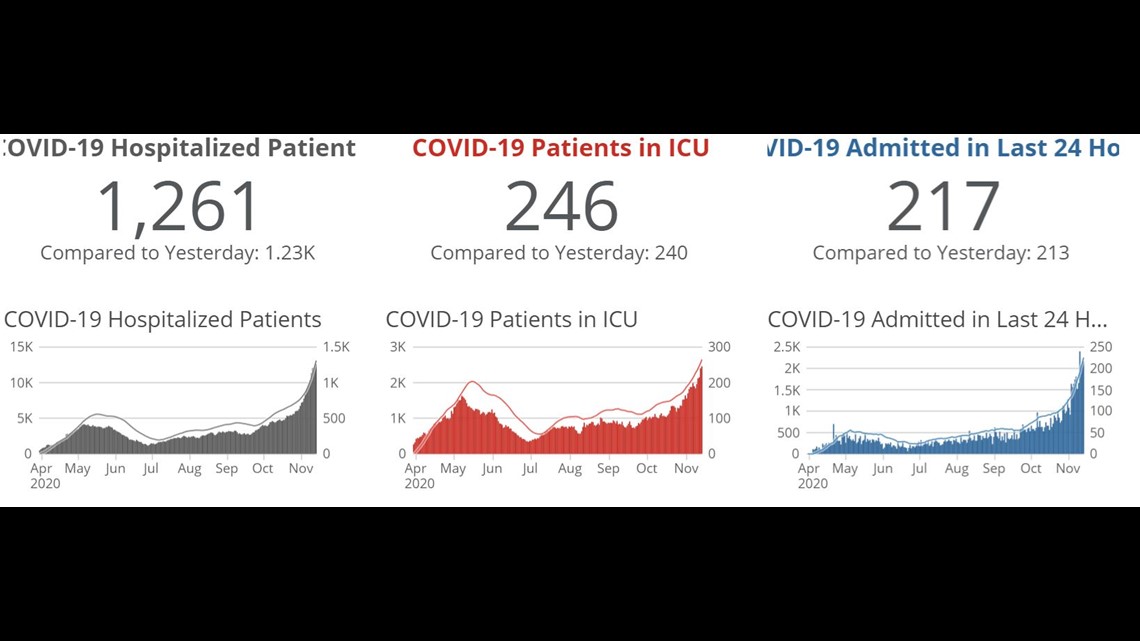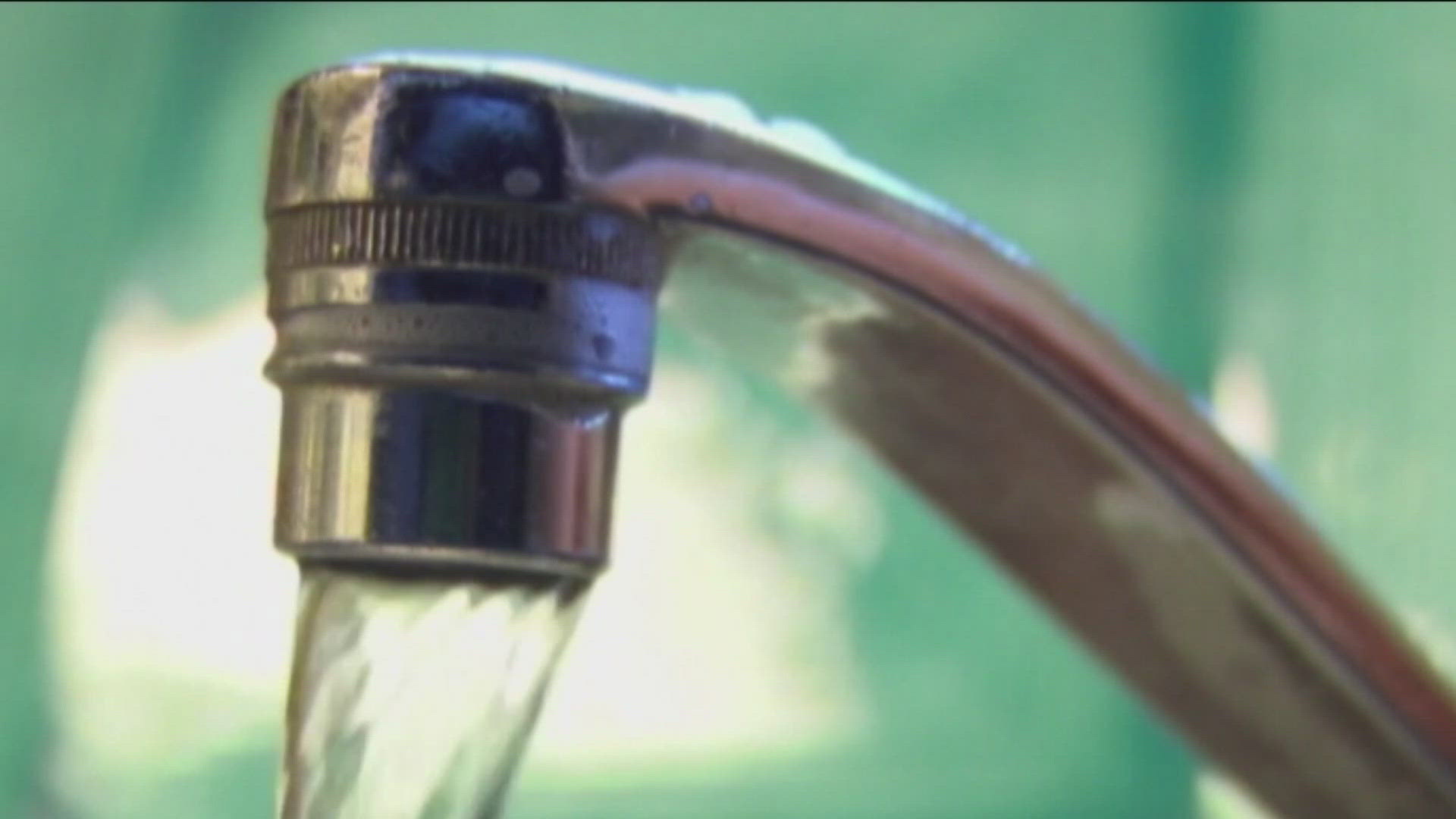DES MOINES, Iowa — Just two of eastern Iowa's 17 hospitals have open and available intensive care unit beds to treat coronavirus patients this week.
The grim news comes the same week Gov. Kim Reynolds announced new mitigation efforts to slow the sharply rising number of COVID cases, deaths, and hospitalizations. Mitigation efforts that, according to several medical professionals in Iowa, aren't enough.
Dr. Jorge Salinas, an infectious disease expert at the University of Iowa Hospitals and Clinics spoke to Local 5 in an interview this week, comparing the pandemic's behavior in Iowa to a train.
"It's a train that is moving at a very, very fast pace," said Salinas. "And at such speed that it is very difficult to contain with mitigation measures. These measures are good. They're welcome by the medical community. However, these are what is required when you have very low incidence rates of the virus. When the train is starting to gain momentum, these things are good as a baseline. But once the train has gained this much speed the measures that we need require more than this."
Salinas was on a virtual meeting Thursday night with Johnson County area leaders and medical professionals to provide an update of the pandemic in eastern Iowa.
"We are actively modifying our protocols to try to predict what the future needs will be in the coming days and weeks," said Salinas. "In general, we should try to decrease socialization. A common rule is to not socialize in groups larger than 10."
Dr. Stephen Scheckel, a physician at Mercy Hospital in Iowa City, echoed concerns for his facility.
"We're definitely heading in the wrong direction," said Scheckel. "This affects not only our family members and friends, but it also affects our ability to take care of patients at the hospital. All of the hospitals are experiencing their care providers getting sick."
Scheckel pointed out the crisis facing the region's hospitals and medical facilities. He said UIHC has been leading the way in coordinating open beds for COVID patients.
"The eastern Iowa hospitals are pretty much at their maximum capacity," said Scheckel. "And when that happens, then we all risk the possibility of not having the health care services that we need."
In the latest survey of hospital leaders in the region, of the 17 included, only two hospitals had ICU bed capacity, according to Scheckel.
"If you think about that, the sickest patients are going to need ICU services, yet those 17 hospitals, we can only send those patients to two of them. And it won't take long for those to fill up," said Scheckel.
Right now, hospital leaders in the region are getting together to share resources so no patient is turned away for the care they need.
Scheckel said bars and restaurants should not be fully open so people can congregate and potentially spread the disease.
"I think more measures about mandatory mask-wearing are essential, we have to step up and do what it takes to turn this curve down the other way," said Scheckel. "We are headed into a very dangerous period."
For the last few weeks, Iowa has seen a record-breaking number of daily new cases for county public health leaders and state contact tracers to investigate. Sam Jarvis with the Johnson County Public Health Department said his office is lagging behind in investigating those new cases.
"We are rapidly increasing the number of new cases we are seeing every day. We are not where we want to be with cases," said Jarvis. "We do have to stress how severe this is and how important it is because with our case investigations, every day it is in the triple digits. And that causes us to lag behind even more. And it's becoming increasingly difficult to make contact with the person."
Jarvis isn't alone in local public health workers trying to track down potentially exposed individuals through the contact tracing program.
Mahaska County Public Health Coordinator Denyse Gipple told Local 5 in an interview this week that sometimes people don't answer the phone or don't take the advice of public health professionals.
Salinas told the group UIHC receives calls from centers in other states, asking for help and bed space.
"They are trying to transfer their patients to us, so the entire Midwest is experiencing these shortages," said Salinas. "The number of hospitalizations we are seeing today is the reflection of the number of new diagnoses we had two weeks ago when they were half of the number of new infections we are seeing now....even if we were able to effectively stop all transmission going forward, the number of hospitalizations will continue to go up in the coming weeks....so bottom line, yes, the system will be overwhelmed."
Since the middle of October, Iowa has set record after record for the number of hospitalized coronavirus patients. The previous peak was in May, with a little more than 400 patients needing treatment in the hospital.
As of Nov. 13, 1,261 patients were in Iowa hospitals. You can see the peaks in three graphs below of COVID patient data. The numbers begin to tick up in September and then grow rapidly.


Reynolds signed a proclamation this week that would require masks for indoor and outdoor gatherings of 100 or more people. No new mask requirements or restrictions on capacity were put in place for restaurants and bars.
The new rules do not apply to school districts either.



